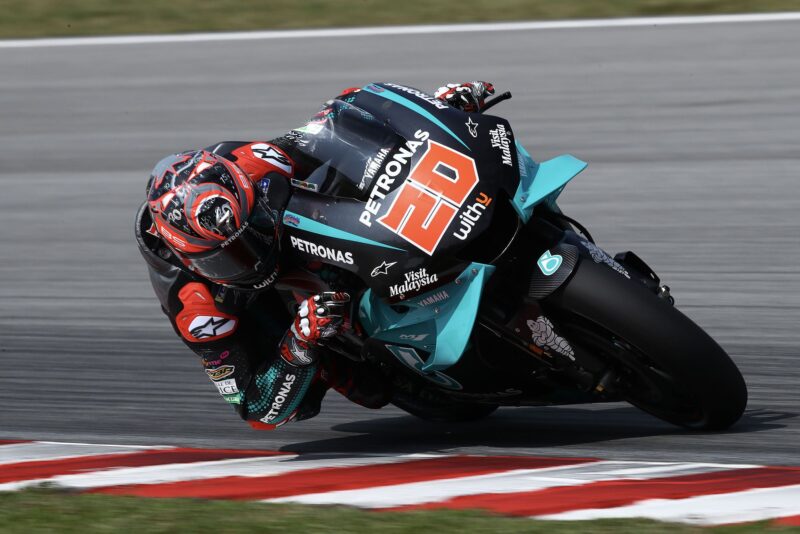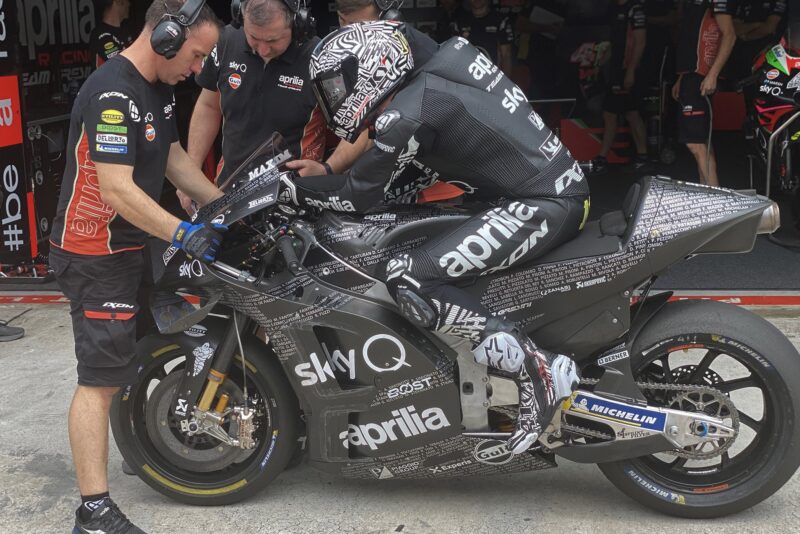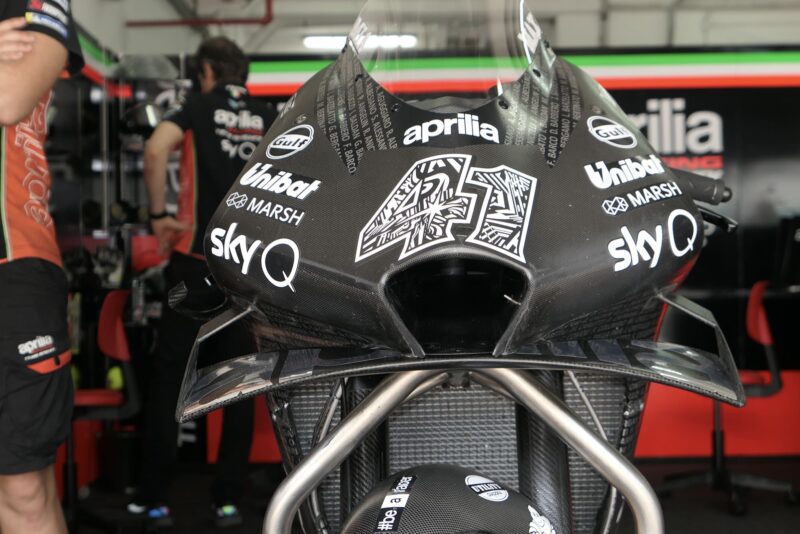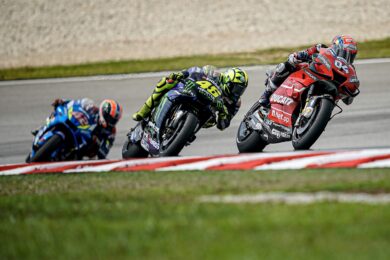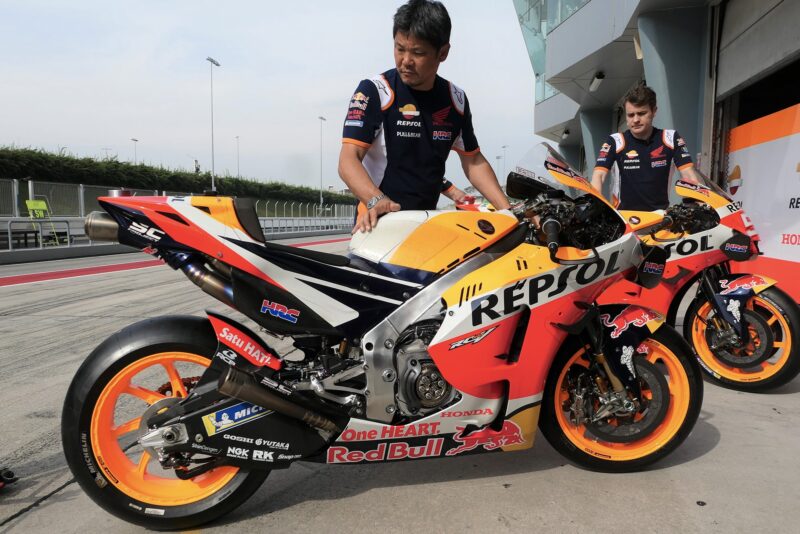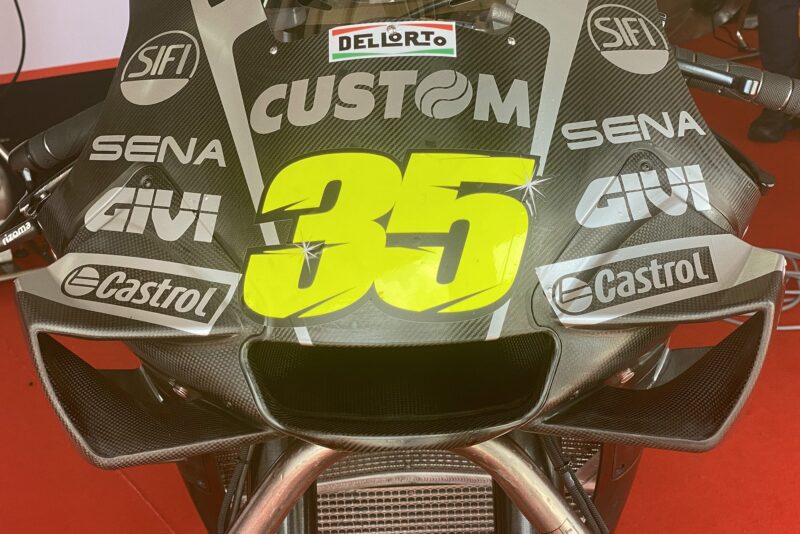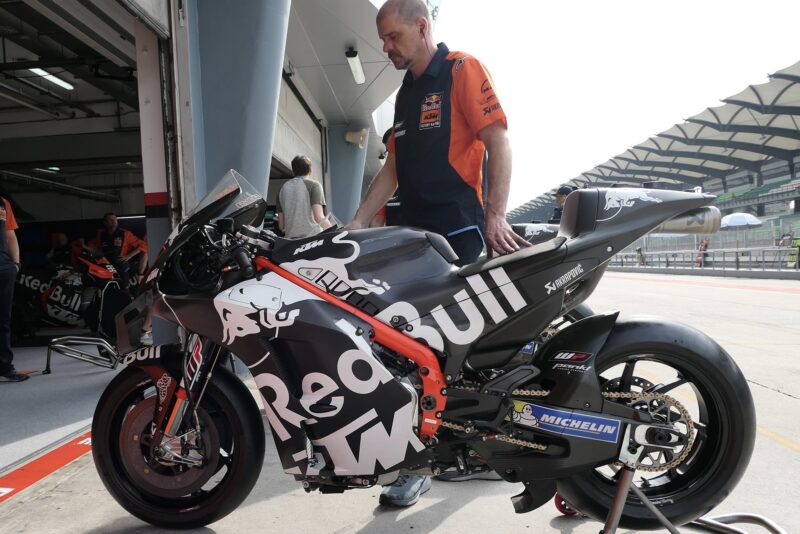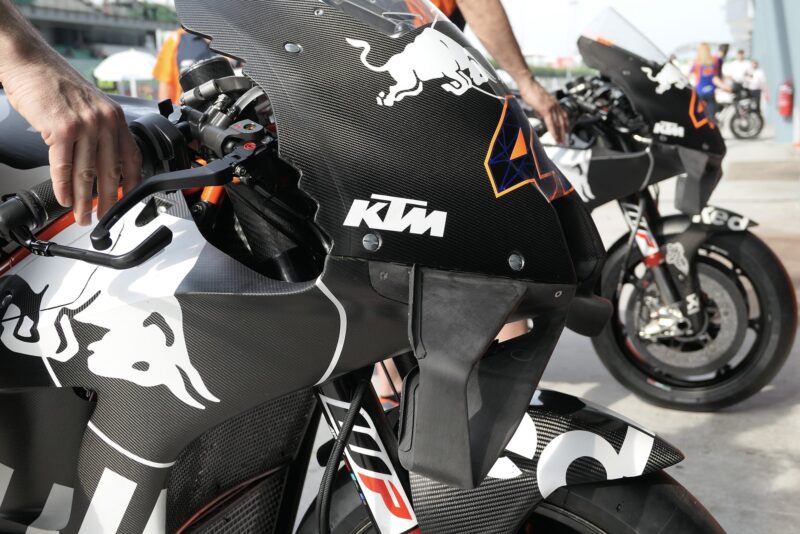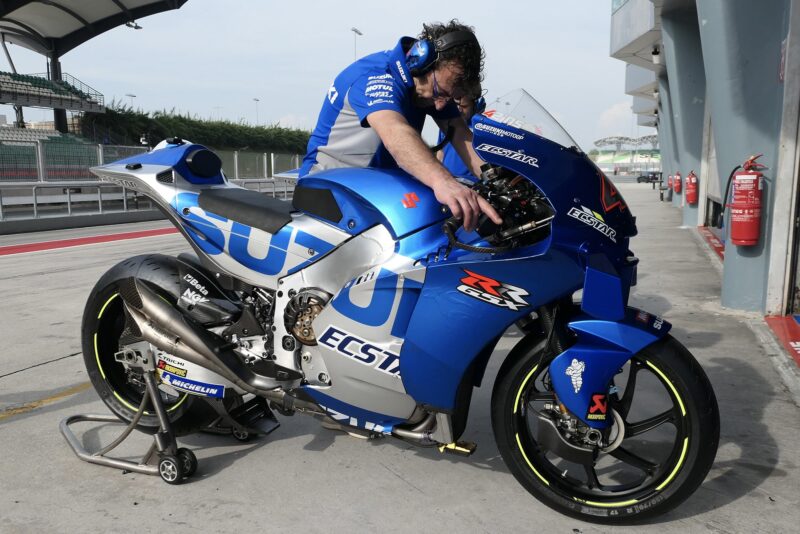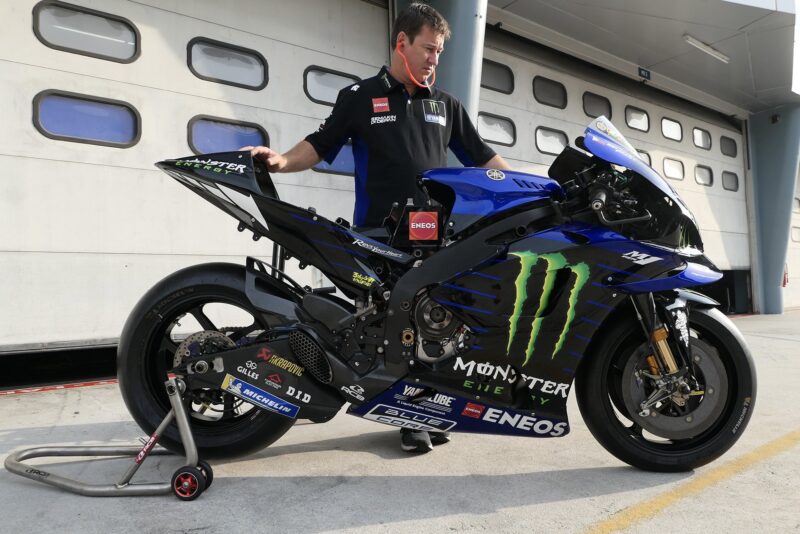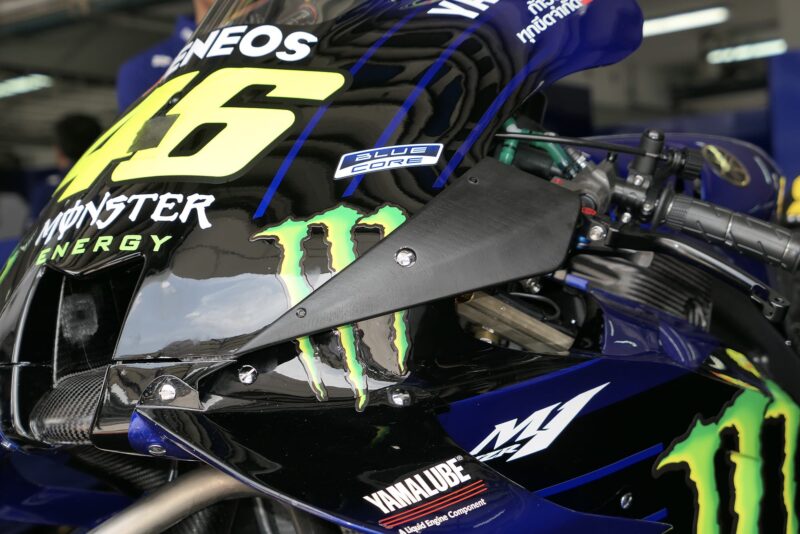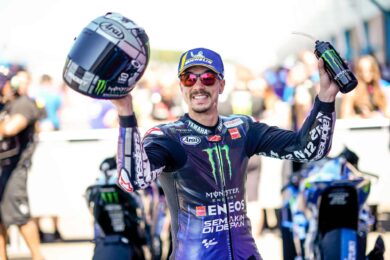Engineers once insisted 90-degree V4s were too long for MotoGP, requiring a long wheelbase that makes bikes turn like trucks. But designing a more compact engine that sits in the chassis more like a V than an L has solved that problem. All Aprilia had to do (this is a gross over-simplification, of course) was copy the base design of Honda’s RC213V and Ducati’s Desmosedici, MotoGP’s dominant forces of the last few years.
Espargaro is delighted with the new RS-GP which has more horsepower and is more stable, more agile and turns better.
“It’s a revolution,” said the Spaniard who was tenth fastest, 0.345 seconds from the top and ran a race pace with top-five potential. “I sincerely believe I’m ready to fight for the podium.”
Although he struggled to get the maximum out of softer tyres at Sepang he rode a 1min 58.694sec, eight-tenths faster than his 2019 qualifying time and 1.9 seconds better than his best race lap at the track.
There were problems of course, inevitable for such a new motorcycle. The engine lacks low-rpm torque and the bike had some reliability problems on the final day. But considering the latest RS-GP had never done a lap before it arrived at Sepang this was an incredible achievement by Aprilia.
Ducati: Faster than everything, as usual
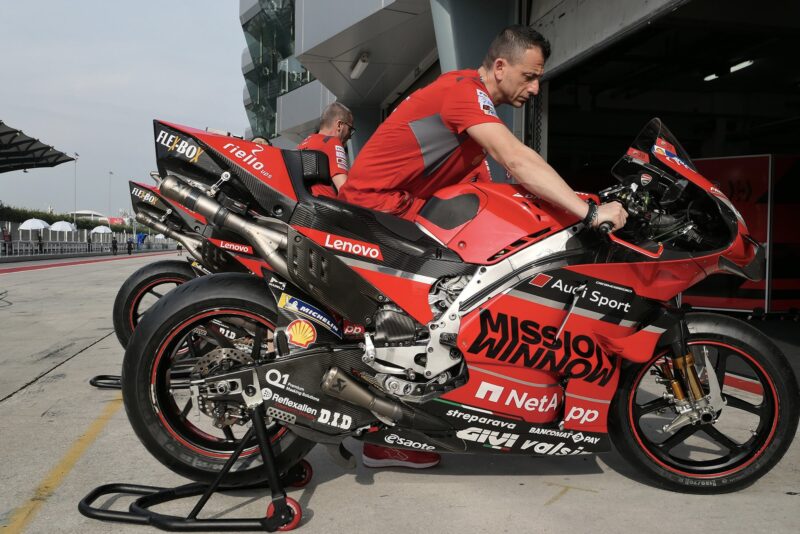
Ducati won’t show its 2020 aero until the first race
Mat Oxley
Some things never change in MotoGP. Ducati ruled the top speed on all three days at Sepang. On Saturday the five fastest bikes were all desmodromic GP20 and GP19 machines. Old racers like to say that top speed isn’t important because you only use it once a lap, but when the racing is so tight and you’re able to use that straight-line advantage to help you pass a rival then it’s a big deal.
Ducati’s young hope Jack Miller was the fastest of them all on his Pramac GP20, with a best of 210mph on Saturday. “I just barely pulled it up before the gravel that time,” joked the 25-year-old Aussie who was eighth fastest overall, 0.267 seconds down. “I think I tuck in quite well – I have a good aero shape.”
Miller was happy enough with Ducati’s winter work. The Desmosedici’s all-important mid-corner turning is a bit better (but only a bit), power delivery is smoother, which is good for the tyre, and he’s making steady progress adapting bike settings and riding technique to suit Michelin’s 2020 rear slick.
However, factory rider Andrea Dovizioso who finished MotoGP runner-up in 2017, 2018 and 2019, wasn’t exactly glowing with confidence in his ability to go one better this year. He has both good things and bad things to say about the new rear slick – he can’t use its extra edge grip and he doesn’t like its transition from edge grip to drive grip as he lifts the bike out of corners, but he can use more throttle once he’s on the drive area of the tyre.
On Saturday Dovizioso crashed when he opened the throttle exiting Turn Six, which unloaded the front tyre and put him on the ground. Miller says the tyre is less predictable when it starts to slide, although both hope that these issues will be fixed with electronics improvements.
Don’t be surprised that Ducati didn’t reveal its 2020 aerodynamics at Sepang. Its aero engineers never reveal their winter’s work until the first race, so that rivals have no chance to copy them.
